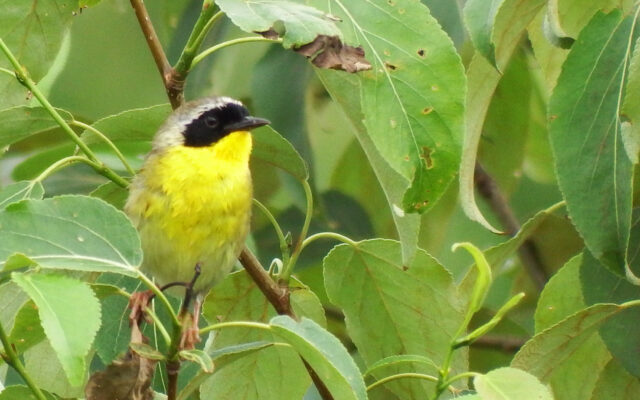
You can find these birds in your backyard if you look beyond your feeder
By Bob Duchesne
I had the pleasure this week of presenting a program to the Downeast Chapter of Maine Audubon in Ellsworth. The topic: Birding Beyond the Backyard Fence. I looked for you in the audience, but since I didn’t see you there, here’s what you missed.
Many people are familiar with their backyard birds, primarily those that are visiting feeders. Most feeder birds are seed-eaters. Finches fall into this category. Some birds enjoy a more varied diet. For instance, chickadees and nuthatches eat seeds and bugs. Woodpeckers devour insects, but they’ll chow down on suet and even try out a sunflower seed or two.
Some non-feeder birds are obvious in the backyard, such as American robins and eastern phoebes. Song sparrows are ubiquitous, comfortable even in urban areas. Yellow-bellied sapsuckers should be easy, starting this week. Great-crested flycatchers will start whooping it up in early May, and these can often be right in town.
Warblers are trickier. Pine and yellow-rumped warblers may visit a feeder upon arrival, but otherwise warblers are insectivores with no interest in birdseed. Some of them don’t mind sharing your yard with you.
There are approximately two dozen warbler species making babies in Maine. About a third of them might nest in your yard. Another third might reside in your neighborhood beyond the fence. The remaining third consider living near humans to be repulsive.
It would not surprise me to find any of the following warblers nesting inside your fence: common yellowthroat, black-and-white warbler, American redstart, northern parula, pine warbler and black-throated green warbler. Blackburnian warblers are possible in yards with enough mature trees. Yellow warblers are feasible in large yards that feature plenty of open area, bordered by shrubs.
Just beyond the fence, I reckon that Nashville, magnolia, black-throated blue and yellow-rumped warblers are potential neighborhood nesters. With enough woodland, ovenbirds are almost certain. If the woodland is dense and wet, Canada warblers are possible. By mid-May, I’ll wager I can locate all 12 of the warblers mentioned so far within 20 minutes of entering Bangor City Forest.
Five vireo species nest in Maine. Three of them could be on either side of your backyard fence. In particular, red-eyed vireos are abundant even in wooded urban neighborhoods. Blue-headed vireos are common. Warbling vireos are pickier about habitat, but they can also be found within city limits. There’s a bunch around Essex Woods in Bangor.
You’d have to live near a tangled woodland to hear winter wrens, or a cattail wetland to hear marsh wrens. But house wrens are so comfortable around people that they’ll nest on a porch. Carolina wrens are southern birds that are moving north and they’re as nonchalant as house wrens about nesting in your backyard. I heard one in a crowded subdivision along the Kenduskeag Stream last week.
Three species of mimics are relaxed around people. Northern mockingbirds are plentiful around the Bangor Mall. Gray catbirds lurk in many suburban neighborhoods. Even brown thrashers can be found along the wooded edges of fields in town. They’re behind Home Depot in Bangor, and nest along the edges of Saxl Park.
Hermit thrushes are so common that they can be found in nearly any sufficiently forested subdivision. Another thrush, the veery, is more plentiful in town than people realize. In Bangor, they’ll be calling regularly around Essex Woods and Bangor City Forest.
The point is this: you don’t have to go far to find a lot of different birds. Many are in your yard, perhaps up in the treetops, unseen. Many more are just beyond the fence. If your backyard abuts a woodland, field or marsh, even more possibilities abound.
Want proof? Last spring, I took a walk in my own neighborhood, wandering down the road for a half-mile or so. Along the way, I encountered 33 different species. In just that short distance, I tallied nine red-eyed vireos, including the pair that nests in my yard annually, plus a couple of blue-headed vireos. There were five American redstarts, four northern parulas, four pine warblers and smaller numbers of five other warbler species. There were three different flycatcher species, five different woodpeckers and a potpourri of others: barred owls, bald eagles, sparrows, nuthatches, swallows, blackbirds and finches.
The habitat just beyond your fence is different than mine, and your selection of birds will vary accordingly. But there will be many more birds present than just those coming to the feeder. You simply have to be aware they’re there. Get ready, because here they come.